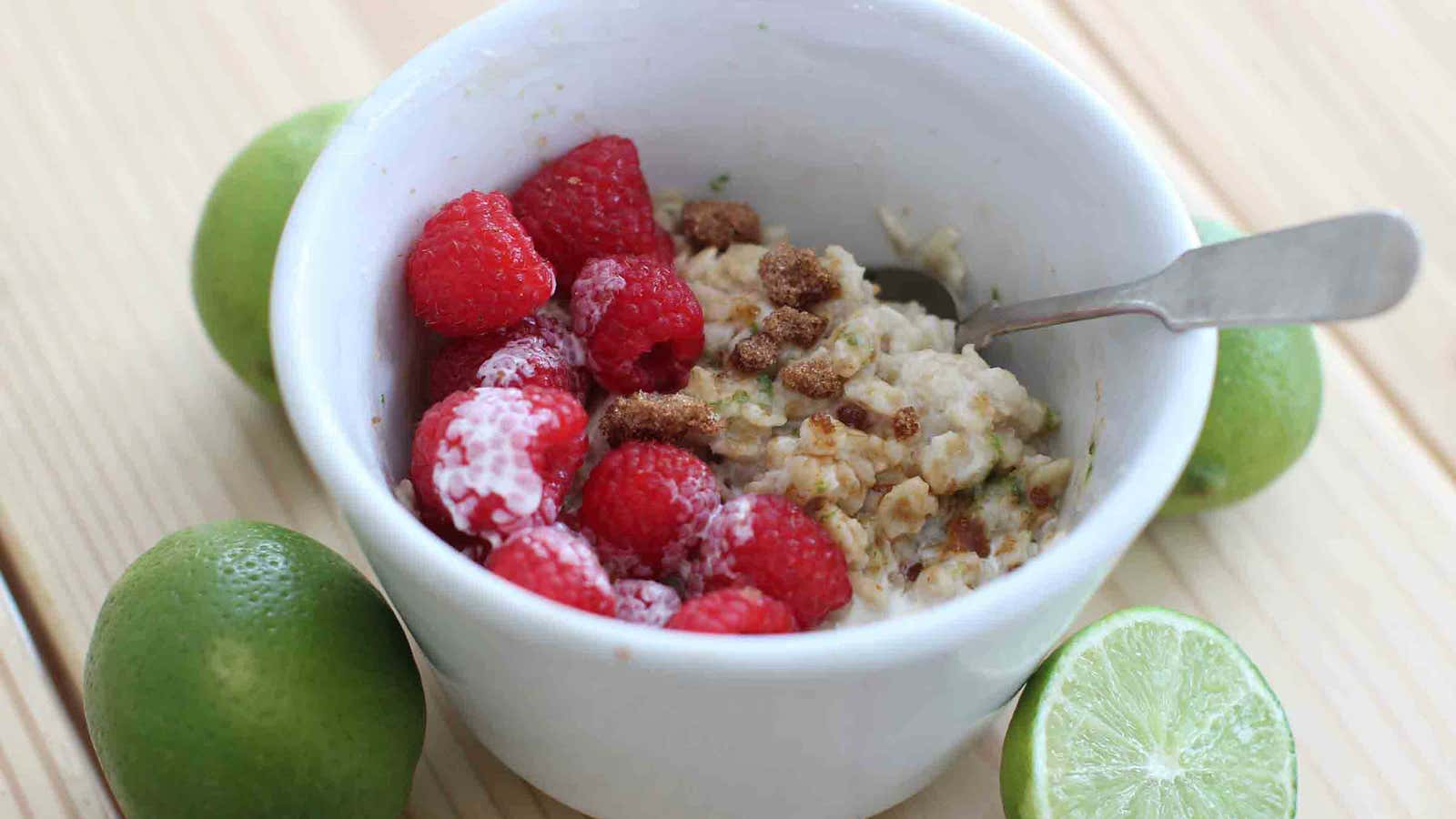Asthma continues to be a major problem throughout the world. Globally, it is the most common chronic disease in children, according to the World Health Organization. In the US, 8.3% of children had asthma in 2013. It is the third leading cause of hospitalizations for children under 15, and is a leading cause of school absenteeism.
But there’s good news: A high-fiber diet may help prevent asthma, according to a new study from Nature Communications, and those benefits may be passed down during pregnancy. The researchers found, in mice, a high-fiber diet could suppress allergic airways disease (AAD), which is similar to asthma in humans. They also found that the adult offspring of mice fed this diet didn’t develop “robust” AAD and that similar correlations exist in humans.
The researchers started by feeding groups of mice three different diets—control, high-fiber and low-fiber—and testing their feces and blood for the composition of their gut microbiota (or community of microorganisms) and levels of short-chain fatty acids (SCFAs). (SCFAs had previously been connected to T regulatory cells, Tregs, which are found in lower numbers and are less functional in asthmatics.) The results were clear: The amount of fiber in the diet had an impact on both the amount and kind of microbials in the mice. The mice on the high-fiber diet also had higher levels of SCFAs, particularly acetate, leading the researchers to conclude that a high-fiber diet changes the composition of the microbiota in the gut to produce more SCFAs.
Next, to understand how the microbiota and SCFAs impacted asthma, the mice were again fed the three different diets, and, for some, acetate was added to the drinking water. During days 12-15, the mice were exposed to house-dust mites to induce AAD in a way similar to asthma in humans. Unlike the rest of the mice, the ones eating the high-fiber diet or drinking the acetate-laden water did not develop AAD. (However, in mice that already developed AAD, the acetate did not help.) The researchers then arrived at their next conclusion: A high-fiber diet and, in particular, the consumption of acetate, “protects against the development of AAD.”
The researchers also tested pregnant mice. After feeding the pregnant mice the high-fiber diets or acetate water, their offspring were weaned at 3 weeks onto the control diet. At 6 weeks, AAD was induced. However, AAD failed to develop. This was true both in younger offspring and older. Because the same was not true when the high-fiber diet or acetate was consumed during lactation, the researchers concluded that the impact happens in utero.
In pregnant women, high-fiber diets also lead to higher SCFA levels, the researchers found. They also note an association between mothers with higher-than-median acetate levels and “a significant decrease” in the percentage of their infants that had to make two or more doctor visits for coughing and wheezing, as well as less parent-reported wheezing.
Bottom line: On top of lowering cholesterol and helping digestion, fiber-rich foods like beans and fruit may also help you and your future children breathe more easily.
